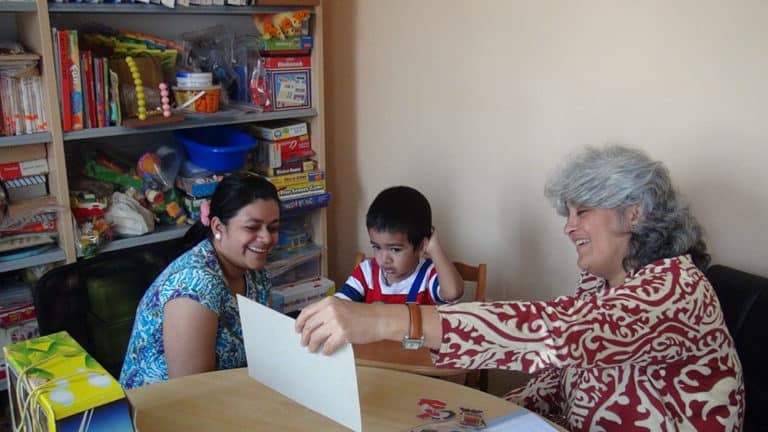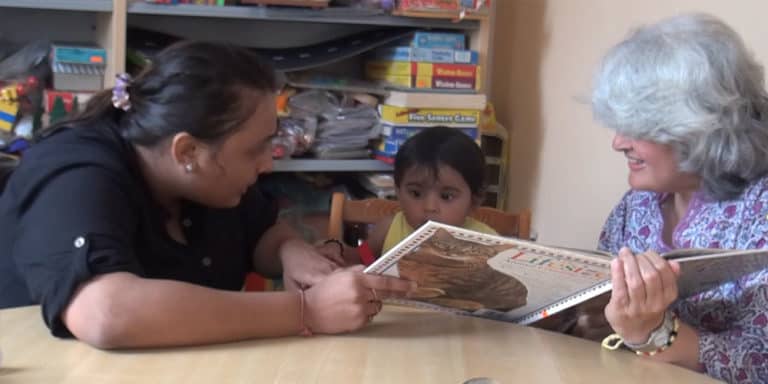Delivering Distance Therapy
Early childhood is special because it allows our children to stay home and learning, from within the security of home. Outings to the park and to the local grocery or to the homes of friends bring variety to each week. Variety brings with it new learning opportunities!
In the presence of hearing loss, this domestic routine gets disrupted. On-going evaluations, appointments with doctors and specialists fill each day and weekly therapy visits exert their pressures as they struggle to maintain the rhythm of their family.
Auditory-Verbal Therapy is structured around weekly sessions and face-to-face delivery. While some AV therapists may argue that this face-to-face delivery is central to their service delivery, I believe that Auditory-Verbal Therapy is committed to structuring intervention in a manner that allows caregivers to conserve their time and energy to raising their child with hearing loss to listen, learn and talk. A service that best supports caregivers by providing such sustained support, is one that fulfills the essential element of being an effective Auditory-Verbal Therapy service.
The pandemic has changed all that. Some of us have had to deliver our services in Auditory-Verbal Therapy online. Personally, I see this as Growth in practice. I do not see it as burdensome. Nor should families.
Distance therapy is a shift in the mode of service delivery. This shift is such that it requires us as professionals to re-think the essence of our practice and how to facilitate effective delivery despite the change in mode.
This generation of young children has to contend with the onslaught of screen time and I do not support putting babies and young children in front of a screen from infancy. It is unnatural. My distance therapy service is through discussion with caregivers, online, having provided a detailed weekly plan.
My work as an LSLS Auditory-Verbal therapist has provided the base-plate for my distance therapy service. I would not have ventured into Distance therapy without it. The pandemic however has thrust some of us into online work without the luxury of having rooted ourselves in face-to-face therapy.
AVT Direct, my online Auditory-Verbal Therapy service provides caregivers with a weekly video and a soft copy of their weekly plan. The progress of young children with hearing loss through AVT Direct’s service has been inspirational and I share my insights, here, with you. Use them as a framework within which to establish your style of online therapy!
- How comfortable is the family with an online service?
- Identify key family members who may not be and with whom you need to schedule a meeting to get them on-board.
- Plan how to get all key caregivers on board.
- Discuss with them how you will address each of their concerns. Providing a timeline always helps.
- Identify the elements in your style of delivery that can be effectively conveyed via distance. e.g. your format for a session plan via distance Vs your format for a session plan via face-to-face.
- Identify those elements that you need to work on and include in your service delivery. e.g. provide a detailed set of resources to help with following-up on each target.
- Know that the strength of distance therapy lies in thorough preparation. Techniques, strategies, resources that you relied on demonstrating now have to be described and monitored. Be very clear about how you will convey these in the session at hand for this particular family that you are working with.
- Let go of control. You no longer run the show, like you used to! Hand-over to the caregiver by systematically transferring your skills to them and then monitor how effectively they incorporate them into their family style and interaction with their child.
You will find yourself refining your approach and formats as your style of distance therapy evolves. You will become more efficient in your time management and planning.
You know then that you are growing!
Most importantly, the families and children in your care will thrive as they conserve their energies and re-direct them to support their child.



